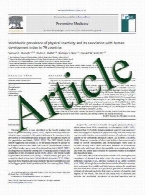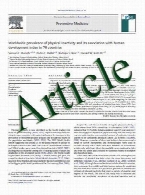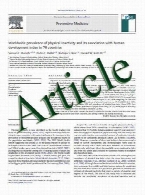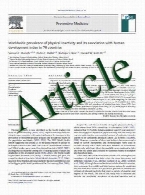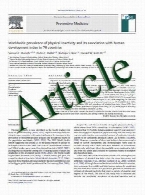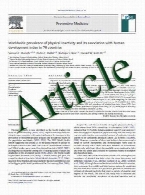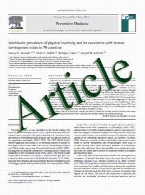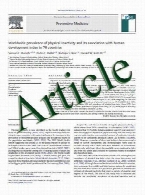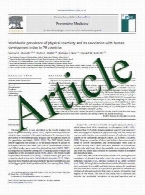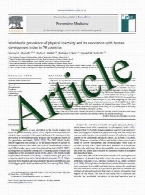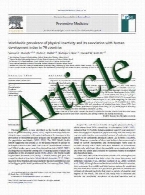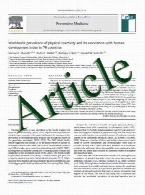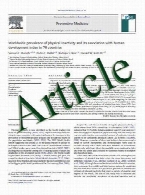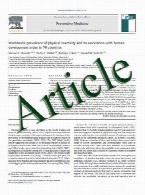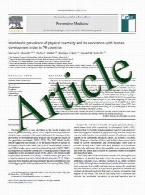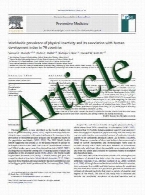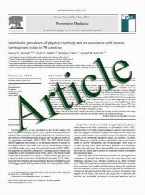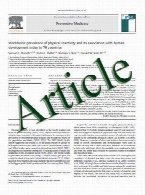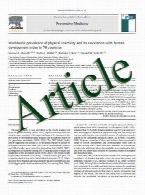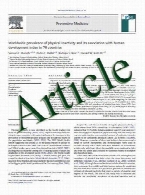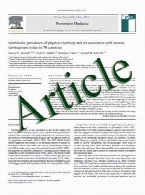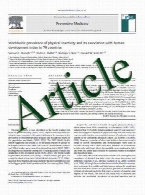

Distinct expressions of microRN ...
Estrogen receptor (ER) a is essential for estrogen-dependent growth, and its level of expression is a crucial determinant of response to endocrine t ...
Are symptomatic guidelines for ...
Oncologists recommend chemotherapy to postmenopausal women with adverse prognostic factors, but predictors of the benefit of chemotherapy are mainly ...
CD8+ cytotoxic T cell and FOXP3 ...
The prognostic significance of tumor-associated FOXP3? regulatory T cells (Tregs) and CD8? cytotoxic T lymphocytes (CTLs) in invasive breast carcino ...
Effect of the overexpression of ...
Breast Cancer 2 gene (BRCA2) mutation carriers have a 45% chance of developing breast cancer and a 11% risk of developing ovarian cancer by the age ...
Lifecourse predictors of mammog ...
Dense mammographic patterns are a strong predictor of breast cancer risk. Factors at differing stages of life have been linked to breast cancer risk ...
Pilot study of radiofrequency a ...
Background There is increasing demand for minimally invasive treatments for small breast cancer mainly because of the desire for better cosmetic res ...
Primary systemic chemotherapy o ...
Primary systemic chemotherapy has become a standard of care for operable breast cancer patients who are candidates for adjuvant chemotherapy. Induct ...
Radiofrequency ablation as loca ...
Purpose To evaluate the safety and efficacy of radiofrequency ablation (RFA) as a local therapy for early breast carcinomas, we performed a phase I/ ...
MR and US imaging for breast ca ...
Background Neoadjuvant chemotherapy (NAC) is commonly utilized to treat operable breast cancer. The purpose of this study was to review the findings ...
Preoperative therapy: recent fi ...
Preoperative systemic therapy (PST) is the standard treatment for locally advanced breast cancer and a standard option for primary operable breast c ...
MR imaging of triple-negative b ...
Little is known about the MR imaging features of triple-negative breast cancer (TNBC), but TNBC has a worse prognosis because it has no effective th ...
Histopathological effect of rad ...
Radiofrequency ablation (RFA) therapy is expected to be applicable to small breast cancers, but no criteria for its histopathological effect have ye ...
Neoadjuvant endocrine therapy o ...
Aromatase inhibitors (AIs) were more effective than tamoxifen as a neoadjuvant endocrine therapy (NAE) for postmenopausal women with estrogen recept ...
Current strategy for triple-neg ...
Triple-negative breast cancer (TNBC) often grows rapidly and has poor outcomes, with a high recurrence rate and a short interval between recurrence ...
A histopathological study for e ...
Purpose To reveal the rate of complete therapeutic effect of radiofrequency ablation (RFA) and its correlation with tumor size by the histopathologi ...
Neoadjuvant endocrine therapy f ...
Patients with resectable, nonmetastatic (stage I–IIIA) breast cancer usually receive adjuvant (postoperative) systemic therapy to control micrometas ...
Lymphedema and breast cancer: a ...
Breast cancer continues to be the most common malignancy among women in the United States. Despite its high incidence, early detection and modern tr ...
Suspicious calcifications in be ...
Background Breast cancer screening by mammography (MMG) has recently increased in Japan. Suspicious lesions are therefore being detected more and mo ...
Alteration of immunohistochemic ...
The immunohistochemical (IHC) biomarkers of breast cancer, especially hormone receptors and HER2, are very important because the pharmacological the ...
The microtubule as a breast can ...
Manifestations of non-equilibrium polarity, random transgressions, and catastrophes are not conditions usually associated with a sense of normalcy. ...
Immunohistochemical expression ...
cancer expressing epidermal growth factor receptor (EGFR) would be clinically valuable. The aim of the current study was to determine the further si ...
Low incidence of methylation of ...
basal-like breast cancer or triple-negative breast cancer (TNBC) has been suggested; however, the associations of other factors involved in the Fanc ...
Incidence of chemotherapy-induc ...
Background The purpose of this study was to determine the incidence of amenorrhea among breast cancer patients aged 40 years and younger following a ...
Rates of pathological underesti ...
Background The clinical implementation of needle core biopsies has given radiologists an invaluable tool for the diagnostic evaluation of suspicious ...
Radiofrequency ablation of brea ...
Background Radiofrequency ablation (RFA) is an emerging minimally invasive technique for breast cancer treatment. There are two different needle des ...

